 Shane Ryan has written about golf for Golf Digest, Grantland, ESPN The Magazine, and Deadspin, and writes about entertainment for Paste.
Shane Ryan has written about golf for Golf Digest, Grantland, ESPN The Magazine, and Deadspin, and writes about entertainment for Paste.
Ryan hosts a podcast, Friends of Tiger, and spent 2014 driving around the country from Tour event to Tour event. His first book, Slaying the Tiger: A Year Inside the Ropes on The New PGA Tour, is available today. Slaying the Tiger is an in-depth look at the present and future of the PGA Tour, with profiles of rising PGA Tour stars like Jordan Spieth, Rory McIlroy, and Patrick Reed.
We sat down to chat via email to talk about the book, the PGA Tour, and Matt Every’s wife’s middle name.
The Sand Trap .com: So, the first question, which is probably also the most obvious, is when did you come up with the idea for this book? To plan all of this, you must have had the idea sometime in 2013, which was not the best year for, as you call it on the front cover, “The New PGA Tour.” Tiger won five times, Phil won the British, Rory and Rickie both went winless, and Spieth’s 2013 performance wasn’t overwhelming. To base a year of your life around Chris Kirk winning a fall event – and have it work out – is incredible.
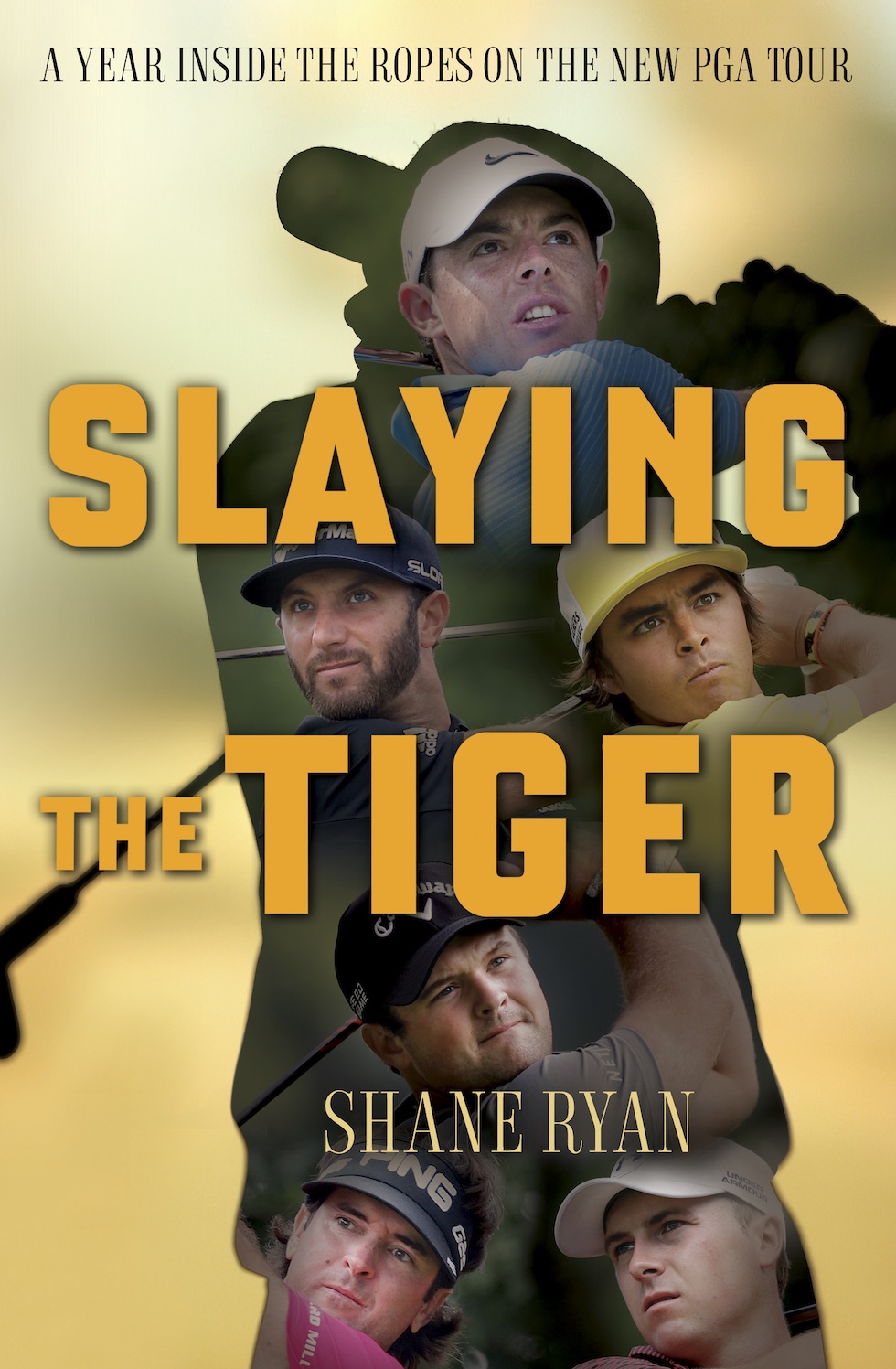 Shane Ryan:That’s right, the idea came about in 2013 as my agent and I tried to think up a good angle that publishers might like. My very simple, very naive idea was, “send me out with the PGA Tour for a year and let me write about it, it’ll be great!” Luckily, my agent Byrd Leavell was more savvy, and knew that we had to come up with something a bit more specific. The youth angle was a collaboration, and you’re absolutely right — it was a total gamble. My nightmare was that the veterans would dominate in 2014 and the whole premise of the book would be shattered.
Shane Ryan:That’s right, the idea came about in 2013 as my agent and I tried to think up a good angle that publishers might like. My very simple, very naive idea was, “send me out with the PGA Tour for a year and let me write about it, it’ll be great!” Luckily, my agent Byrd Leavell was more savvy, and knew that we had to come up with something a bit more specific. The youth angle was a collaboration, and you’re absolutely right — it was a total gamble. My nightmare was that the veterans would dominate in 2014 and the whole premise of the book would be shattered.
Still, I had a feeling that 2013 seemed like the end of something. It wasn’t exactly a last hurrah for Tiger and Phil, but you could see the end coming, and I had the sense that the younger generation was going to break out in 2014. When it actually happened, the scope of it blew me away, and I have to admit I was lucky beyond my wildest dreams (and that luck continues with the 2015 results so far). If nothing else, I knew early on that I wouldn’t have to re-invent the book, which was a nice stress reducer.
TST: Right – you basically got the absolute perfect season, even if, as a Tiger fan, it didn’t really seem like it to me at the time. I don’t think the magnitude of 2014 really stuck me until you laid it all out. What I liked the most about the book was that it’s not often that you both get to watch history happen, and read about in depth right away.
Obviously, most of that history was made by Rory, who you talk about glowingly throughout the book. Was he someone you expected to really like going in, or did that come later?
RYAN: I can honestly say that I didn’t have pre-conceptions about any golfers at the start of 2013, and that’s because I was still really new to covering golf. My “career” in golf journalism started at the 2012 Ryder Cup when I begged Grantland to send me to Chicago, and before I immersed myself in 2014, I’d only covered about five tournaments. Even the obvious complaints shared by hundreds of journalists were completely new to me. For instance, I had no clue Bubba Watson would be tough to deal with. That naivete was cured the first time I brought him up to a fellow reporter, and the second time, and the third time, but it shows you how green I was when I began reporting in the fall of 2013. I knew that was going to be the most important job I had during the year — getting to know what these guys are really like, in a way that goes beyond the glowing profiles you’ll read online or see on TV.
In Rory’s case, I had no idea what to make of him at first. It’s hard to remember now after his amazing success in 2014, but at the start of the season, there were a ton of question marks because he had gone an entire year without winning on the PGA or European Tour. The first time I saw him was at the Match Play Championship, where Harris English beat him, and then again at the Honda Classic, where he had to answer a lot of questions about his form and eventually lost on Sunday to Russell Henley. So it’s not like he was dripping greatness at that point, if you see what I mean. It was only through watching him peak in late summer that I realized exactly what this guy was capable of, and then I was really impressed. You can’t fake greatness, and to see Rory live, in top form, is to see the real thing. Watching him felt different than watching any other player, and the glowing praise in the book follows that feeling of awe you get from seeing him win.
What I really like about Rory, though, are the complexities of the man — his intelligence, his wavering enthusiasm, his psychological edge on other players, his background. For me, that’s what makes him a more compelling figure than Tiger Woods, who was like a golf robot for years until the stress built to a critical point and broke him. Rory is very human, but also very charismatic and smart, and the combination always drew me in.
TST: I was actually just about to ask how you got into golf writing, because to go from being somewhat of a newbie to spending a year on Tour and writing a book must have been a huge jump. That 2012 Ryder Cup in particular must have been an interesting slow-motion train wreck of an introduction.
Staying with Rory, I think it’s that intelligence that’s gotten his career off to such a hot start. Thinking about players like Jason Day, Rickie Fowler, Jordan Spieth, and Victor Dubuisson – is there another guy you think has a chance to develop to the point where they don’t necessarily have to have their “A” game to win?
RYAN: If you told me I could cover one event for the rest of my life, any sport, it would be the Ryder Cup. I remember watching on that Sunday in 2012 when the Euros came back, and it was so fascinating to see it play out live that it didn’t really matter to me that the Americans were losing. It would have been devastating to watch on TV, without a journalistic interest, but that’s probably the first time I’ve ever rooted for a story. And now that I know the players, at least a little, I’d root for the Europeans anyway… it’s a loosely guarded secret that most American journalists feel the same. Their guys are just more fun.
As far as other players with the game to win when they’re not perfect, I think Spieth is the obvious answer here. One thing I really like about my book, and which I think people will be into, is seeing Spieth just before his major breakthrough. He came awfully close in 2014 at the Masters and the Players and was almost heroic in Ryder Cup singles against Graeme McDowell, but each time he faded at the end for reasons that I attribute to a sort of fatalistic attitude on the course—he had a bad habit of getting down on himself and believing that the universe was aligned against him. He would beat himself up on the course, and just berate himself through these pressure rounds. It was almost like watching Sergio, but with more self-awareness. But it’s a testament to his maturity that he surmounted that obstacle before his 22nd birthday, and became a Masters champ. I don’t know if people realize how important the end of his Saturday round and that Sunday at Augusta were—I think in a decade we may look at it as the point when he figured it out, and a superstar was born.
On the other hand, when you look at Fowler and Day, there are some similarities in that both have won fewer tournaments than you’d expect. Maybe their respective 2015 wins are the start of a big change in the trajectory of their careers, but at the moment I’d say they’re not at the level of Rory and Spieth. As for Dubuisson, I’m starting to worry that he might have been a flash in the pan. We’ll see.
TST: Spieth is such an interesting case, and you nailed it when you talked about catching him at the point just before his breakthrough. His game isn’t very imposing on paper, but he has played so well at every level that you got the sense it was only a matter of time before he broke through.
I definitely hope Dubuisson isn’t a one-off – the chapters you devoted to his story were some of the most fascinating in the book. His personality is probably more mysterious than his golf game. At the risk of an awkward transition, Patrick Reed is another one of those kinds of guys. For all we know about Reed’s past – in large part due to your reporting – he’s so private that we don’t really know all that much about him. To some strange extent, I find myself rooting for him to play well and stick around just because he’s so interesting to watch. Do you get the sense that he’s someone who can maintain this level of play long-term, or is this weird bubble he’s created for himself bound to pop?
RYAN: There are a surprising number of people who think I hate Patrick Reed, or that I wrote the story on him because I wanted him to fail, or any other variety of reasons that stem from some deep hatred buried in my heart. I always laughed when somebody on Twitter or a comment section said I was jealous, or resentful, or whatever else—if I was resentful of every golfer I met, it would’ve been a really tough year. The simple fact that I wrote an honest profile of him, warts and all, is an unacceptable explanation for a certain kind of reader who, deep down, resents freedom of the press and doesn’t think millionaires should stand up to any kind of scrutiny (I know you’re not one of them, it’s just something I thought about as I read your question). Of course, this kind of reader is a hypocrite who secretly loves drama, but you’ll never catch them admitting that.
Tangents aside, the fact is that I enjoy watching Patrick Reed too, and I enjoyed speaking with him and his wife last year, and I think he’s good for golf. I hope he stays around for years. Whether he will or not is a different question. The irony of hearing people say I was jealous of Reed is that I don’t envy his position at all—I think it’s probably tough to be Patrick Reed, and I think there’s a a lot of pressure tied up in living that life. Maybe he’s strong enough to shoulder it all, and maybe being a winner is truly all he needs, but sometimes I think that kind of strength is an illusion, and that at some point, it will break you down. And by the way, this isn’t unique to Reed—I think the same thing about players like Rory. At what point does the intense visibility, the endless obligations, the lack of privacy, and the pressure to succeed just chip away at your fortitude? Even Tiger, who seemed like the consummate strong competitor, needed an outlet, and when his outlet was discovered, he was humiliated in front of the nation. I’d also add that the pressure is far worse for today’s athletes than ever before. Even a guy like Spieth is bothered by what people say on Twitter, which you can read about in the book.
All that being said, Reed is one of the best competitors in golf today. As far as his game is concerned, I don’t think he’s in any danger of failure. He’s a ruthless winner—if he falters, it won’t be for lack of desire or skill. And as I said, I hope we see him reach levels where he’s contending for majors and maybe even leading the U.S. Ryder Cup team to victory.
TST: I can’t even imagine the kind of intensity we’d see from Patrick Reed if he pulled off a few key shots down the stretch of a Ryder Cup. Keegan Bradley is another guy like that, though I wonder if he’ll ever get back to playing at that level. Jon Curran, a high school teammate of Keegan’s who you mention briefly in the book, finished T6 at the Byron Nelson. So maybe one Massachusetts guy will win in 2015.
I’d be remiss if I didn’t ask you a little about your podcast, Friends of Tiger. What I like about the podcast is that you don’t do a straight weekly recap, it’s more of just a conversation about golfers, much like the book. I’ve been listening to podcasts for a few years, but I’ve always found golf podcasts to be pretty weak. Was a podcast something you’d wanted to do for a while, or more of a niche in the podcast landscape you thought could be filled?
RYAN: Yeah, the amazing thing for me about Keegan Bradley is that after this year’s WGC-Match Play event, he’s now 1-9 for his professional career in match play singles (data from Adam Sarson’s great website), including 0-2 in the Ryder Cup. After he and Phil dominated the pairs matches at Medinah, he gained this reputation as a match play killer, but for now, at least, it seems like he can’t quite hack it on his own—he’s almost literally the worst singles match play golfer in America. Our version of Stephen Gallacher. He’s one guy where I don’t really know what to expect of him. I know my view isn’t held by everyone, but I essentially think he backed into his one major title (triple-bogeying the 15th hole to fall five shots out of first and take himself out of contention, and then getting super lucky when Dufner melted down), and that it was sort of a fluke. I could be wrong, but I wouldn’t be surprised if he never won another major. In fact, we’re coming up on three years with no wins at all, and I doubt the ban on anchored putters will help him at all.
I’m having a blast with the podcast, thanks for mentioning it. You’ll have to come on sometime. I’ve always really liked podcasts, and I used to do a college basketball show that grew a nice audience. I even bought a mixer and learned about audio editing and recording—I drove some Mackie tech support people nuts in the process, I’m sure. With golf, it just occurred to me one day that I had met a lot of people I liked in the golf media world, and it would be fun to talk with them once or twice per week about the game. As you mentioned, my goal with the podcast is to keep it pretty loose and informal and fun. I think too many podcasters, golf and otherwise, treat their shows like a radio program, which for me misses the point entirely. We have total freedom in the format, so why sit there and try to have these boring, structured conversations, all while making your voice sound like Wild Man Chuck and the Bonedog on your morning radio show? So far, I think people have really responded to the podcast, and I hope I can keep it up for a little while.
TST: Alright, let’s do a few sets of quick hits to bring it home, first a few from me, and then a few from TheSandTrap forum users:
Best course (by whatever standard you want) you’ve gotten to cover a tournament at?
In your opinion, was Matt Every’s Wikipedia page written by Matt Every’s managers?
How many lifetimes has Augusta National banished you for?
RYAN: It’s a cliche, but my favorite course was Pebble Beach. It’s just insanely beautiful in every possible way. I’m also a bit of a nerd about trees, and the Montery Cypress were my favorite. I also really, really liked Innisbrook down in Tampa, Pinehurst, Riviera and Colonial (the last two also have excellent signature trees in the eucalyptus and pecan). It’s hard to pick just one, though, because I got a kick out of different places for different reasons—being in the Sonoran desert was like visiting another world for me, and even though Hoylake isn’t the best British Open course, it was my first experience with links golf, so that was great too.
I’m not sure who wrote Every’s Wiki page, but I’d like to volunteer to do the creative re-write. Also, I just noticed that his wife’s middle (and maiden?) name is “Mulligan.” She was destined to marry a golfer.
Currently, Augusta National has banned the Ryan family for four generations, but my great-great-grandchildren are welcome to apply.
TST: All I’m saying about Every’s Wikipedia page is that I want to see a birth certificate before I accept that his wife’s name is “Mulligan.”
To close it out, a few question from the TST users:
From @SavvySwede: Was putting Rory inside the silhouette of Tiger’s head on the cover deliberate?
From @mchepp: Was there anything you came across while researching that you found interesting but didn’t have time to write about?
From @DeadMan: Who were your least/most favorite golfers? Do you expect to receive any backlash, specifically on the Reed and Dubuisson sections?
From @BallStriker: If a player had to bet half his net worth on whether Tiger wins another major, how many do you think would actually bet “yes?” Name a player who has more talent but has gotten less out of his career than Geoff Ogilvy? (Honestly, I only included this one because I love the thought of using “one Geoff Ogilvy” as a unit of talent measurement.)
RYAN: To @SavvySwede: It was deliberate to put Rory at the top of his peers on the cover, and once we had designed it, I did sort of like the symbolism of having him “inside Tiger’s head.” But I can’t claim any kind of foresight there, and actually I think that of all the problems Tiger has, Rory is probably the least of his concerns. On a separate note, I don’t know if you’re actually Swedish, but if so, I want to tell you that Jonas Blixt and Henrik Stenson were two of my best interviews all year. Does everyone in Sweden have that wry sense of humor?
To @mchepp: No joke, the original manuscript I turned in was going to be over 800 pages long. I didn’t realize how much material I was accumulating, and I also didn’t know how many words go on a normal book page, so my MSWord word totals meant nothing to me. My publisher and agent were horrified, as you can imagine, and I basically had to cut the book in half. It meant a lot of trimming in the chapters I kept, but it unfortunately also meant some really, really hard cuts of entire sections. In one form or another, I hope these chapters see the light of day at some point, because I think a lot of them are fun. There are so many players I wrote about, from Chris Kirk (some material there appeared in a recent Golf Digest Piece) to Brian Harman to Brendon Todd to Brooks Koepka to Hunter Mahan to Jonas Blixt, and on an on and on.
Where possible, I adapted some material to other sections, including a great story about Harman taking on Rickie Fowler in college, but it usually was just a cold hard cut. In addition to that, I originally structured the book to have “interludes” between the months, and I had chapters about religion on Tour, anger, the qualities that all pro golfers have in common, caddies, agents, the equipment wars, and the media. Again, I hope to show these in some form or another one day, but for length purposes, they had to go.
To @DeadMan: My favorite golfers were Matt Every, Jonas Blixt, Brendon Todd, Henrik Stenson, and Rory. I guarantee I’m forgetting some, but those stand out to me. My least favorite were Bubba and Keegan. With Keegan, I sometimes feel I might have just caught him on a few days, but I don’t really know. With Bubba, I’m certain I didn’t. As far as backlash, the Reed stuff is well-documented at this point, and I guess we’ll see with everything else. Part of me expects it, but who knows?
To @BallStriker: I don’t think many would bet yes. I know I wouldn’t—there are too many great players gaining too much great experience, and I’ve seen no evidence that Tiger will magically recover his old form. Everything just seems to be getting worse.
That’s interesting about Geoff Ogilvy…I actually have a chapter in my book where I go into some detail about how Australian golfers, for whatever reason, seem to underachieve. But I actually used Ogilvy as a counterexample…to me, it seems like a major title was overachieving for him, at least when you look at his career resume. But I can’t speak to what sort of potential he had. One thing I’ll say for Ogilvy is that he’s really smart and really interesting. I only spoke to him once, and used just a single quote in a story I wrote (and nothing in the book), but the circumstances were kind of funny—he was at the Tour Championship, but since DJ’s suspension, there were only 29 golfers, which meant that the guy with the worst score played alone. If memory serves, Ogilvy played by himself for three straight rounds, and blazed through at crazy speed, finishing in 2.5 hours or something like that. I found him after one of those rounds, and clearly he wasn’t happy, but he stifled his anger and gave me great material as I asked him questions about Rory—which a lot of golfers find very annoying. I really respect Ogilvy. PS, I give your question Six Geoff Ogilvys. Well done.
TST: Alright man, thanks for doing this. It was a lot of fun, and the book was a great read that I think a lot of golf fans will really enjoy.
Photo Credits: © Mike Ehrmann, © Mike Lawrie, © Mike Ehrmann, © Sam Greenwood.

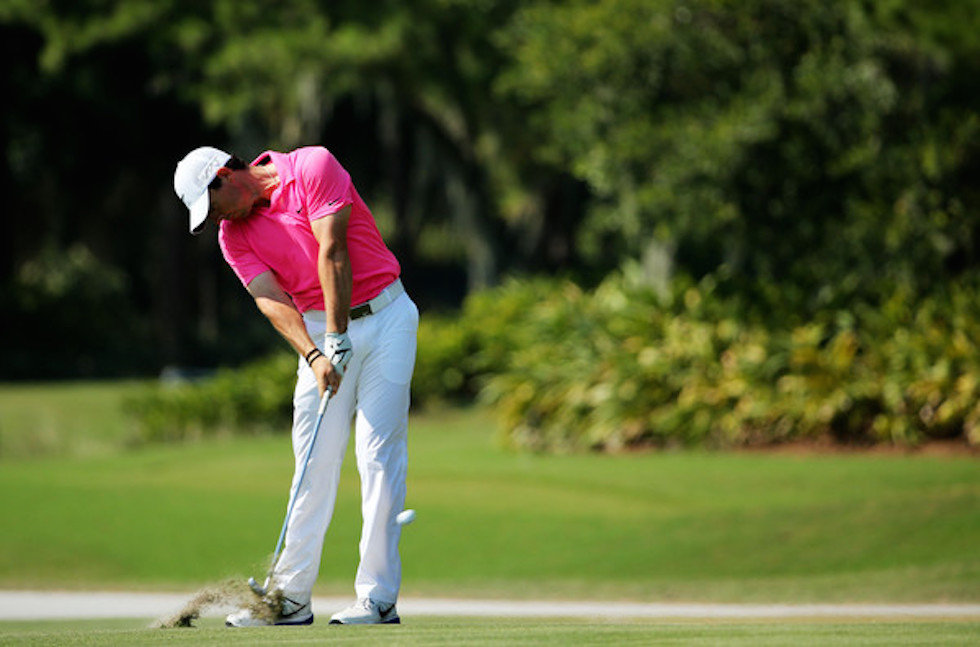
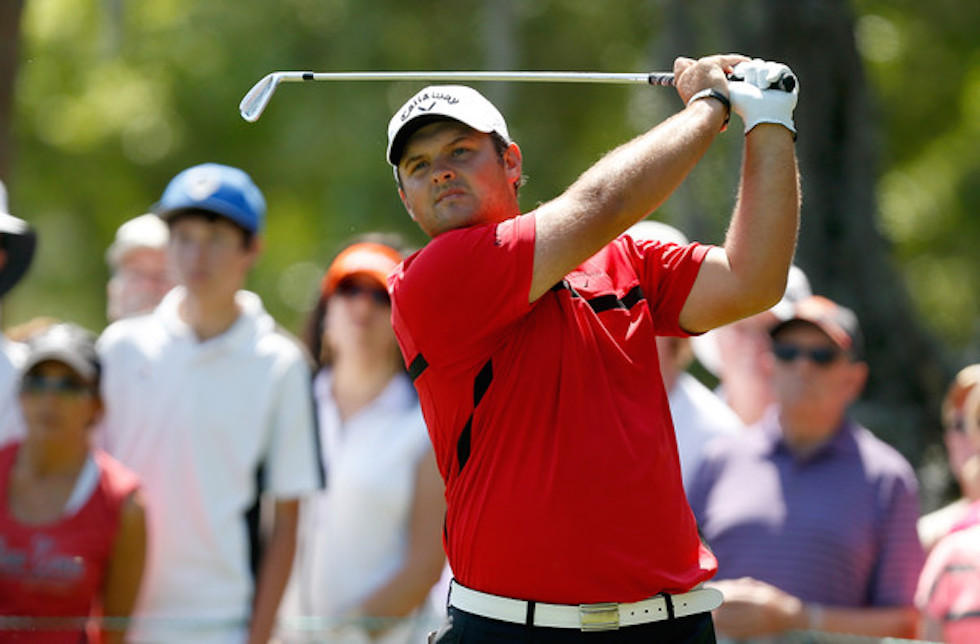
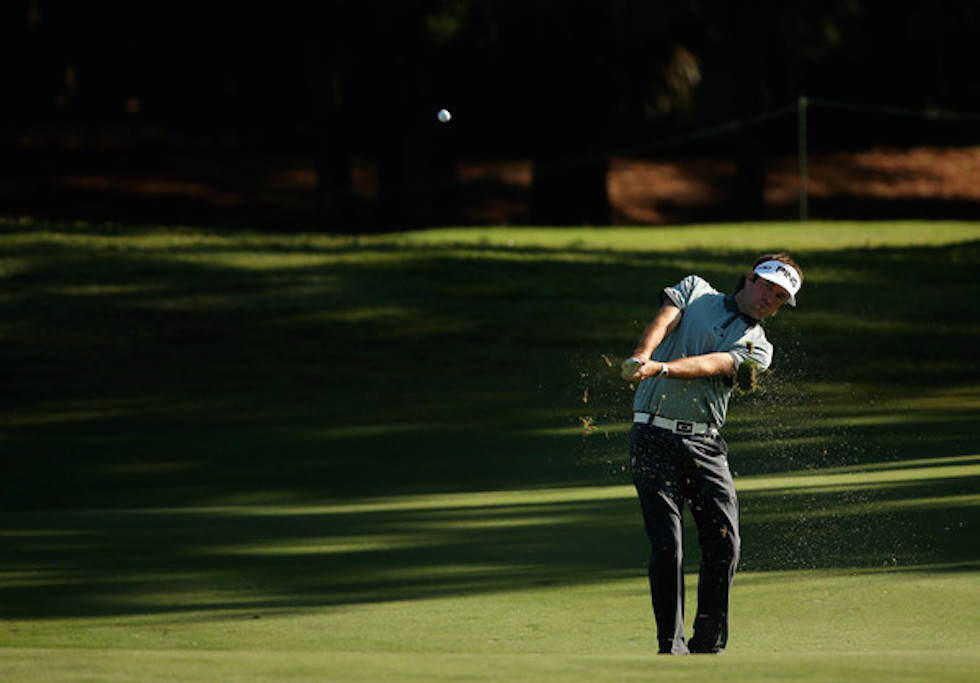
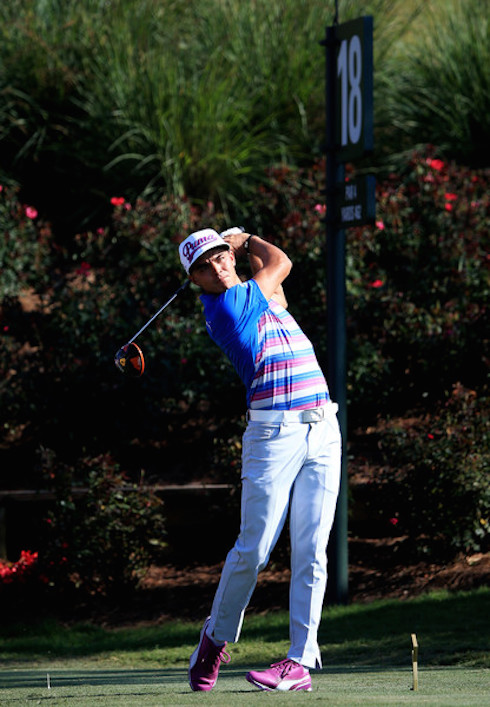


Great read! Thank you to both @jamo and @shaneryan for the insight. 🙂
Nice interview. Looking forward to reading the book.
Great interview. I look forward to reading the book.